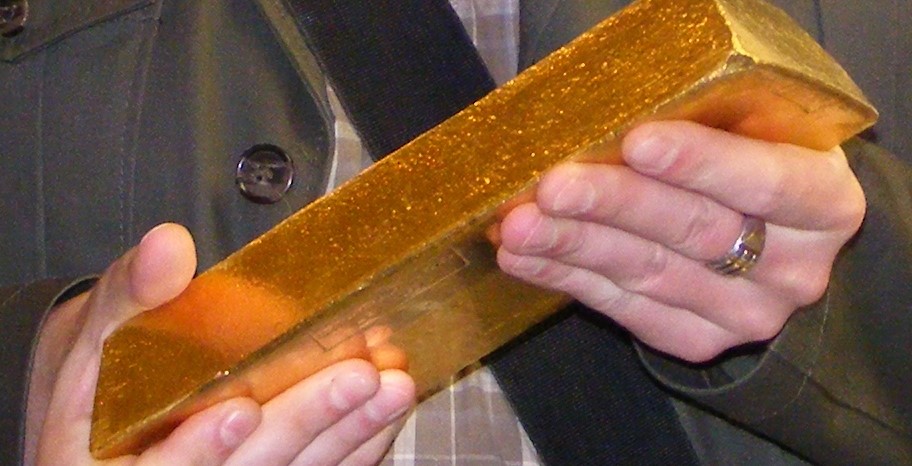Visiting a South African mine in 1969, our guide placed a tapered ingot on a table between us.
“This bar weighs 30 pounds. It’s worth US$20,000 (about $650,000 today). If anyone can pick it up, they can have it.”

My fingers slipped right off as though the metal was glued to the table.
The guide grinned. “It’s slippery as an eel.” How right he was!
It’s one and a half times as heavy as lead. Chabod is the Hebrew for glory. It means weighty. Glorious. Solomon’s temple was lined with it. Not a beam or stone visible. Even the nails weighed over half a kilo each.
King David left a deposit of 300 tonnes for the temple. Solomon used it all. He wanted to do much more and needed further funds. He contacted his friend, Hiram, King of Tyre. The Phoenicians were outstanding seamen, navigating to Britain for tin, Africa for spices, and even as far as Singapore to trade with the Chinese. They knew of huge gold deposits in Thailand, Malaysia, and Eritrea.
Even three thousand years ago, they could sail the oceans, returning with unmeasurable wealth. Israel, for its part, could trade grain, wine, and livestock.
Solomon’s extensive projects included building himself a luxurious palace, fortressing cities, and acquiring thousands of horses and chariots, the tanks of the day. The deadly demand for gold increased.
The king knew the risks. He himself wrote, “Whoever loves money never has money enough; whoever loves wealth is never satisfied with his income. This too is meaningless” (Ecclesiastes 5:10).
Justified by worthy projects, this passion for golden power began the slippery slope to his fall. It was the trigger for his son’s mismanagement and the magnet for the invasion of Egypt. The decline of Israel began with a lust for gold, glory, and girls.
Little has changed.
